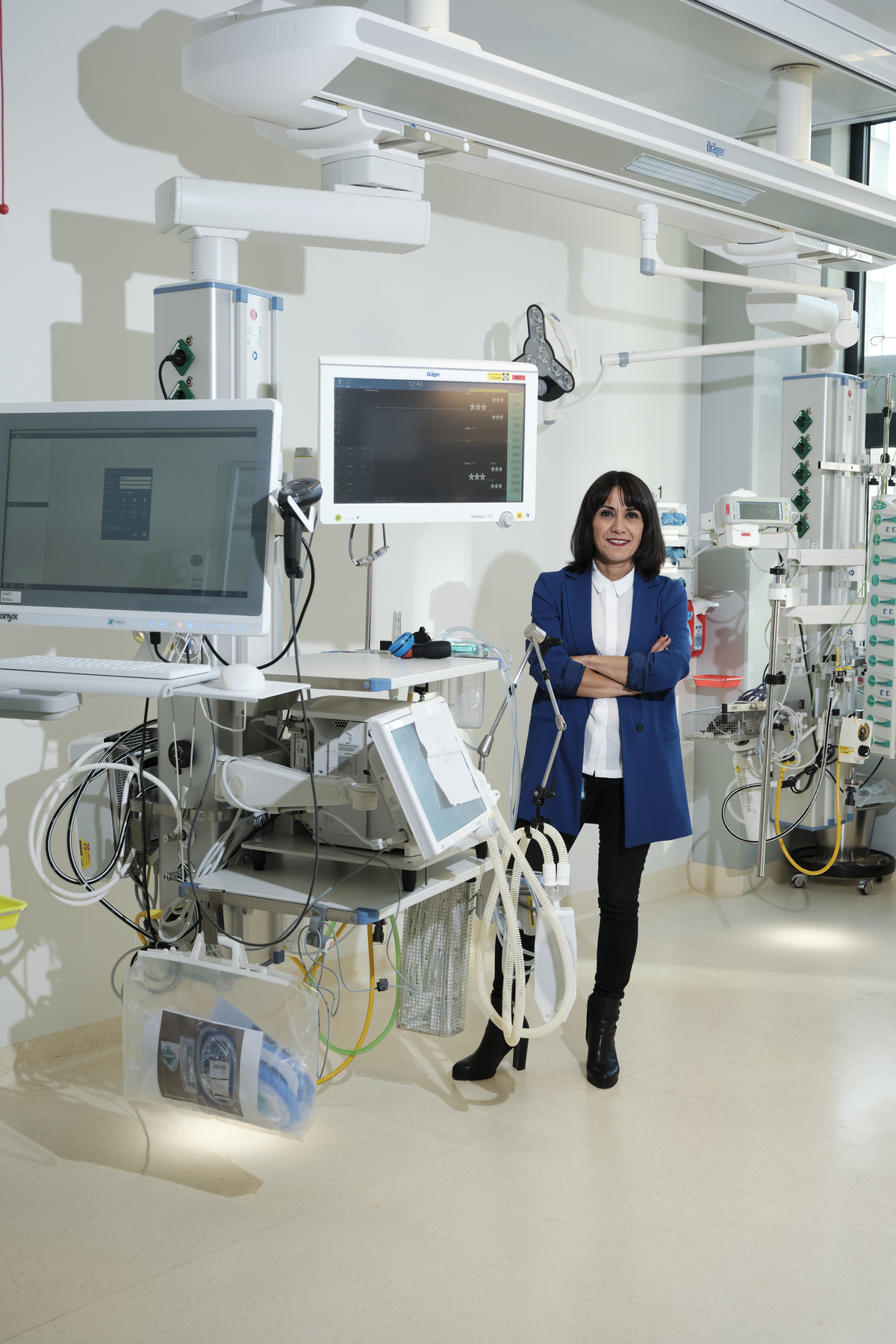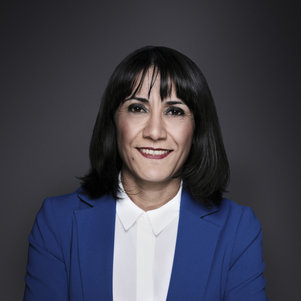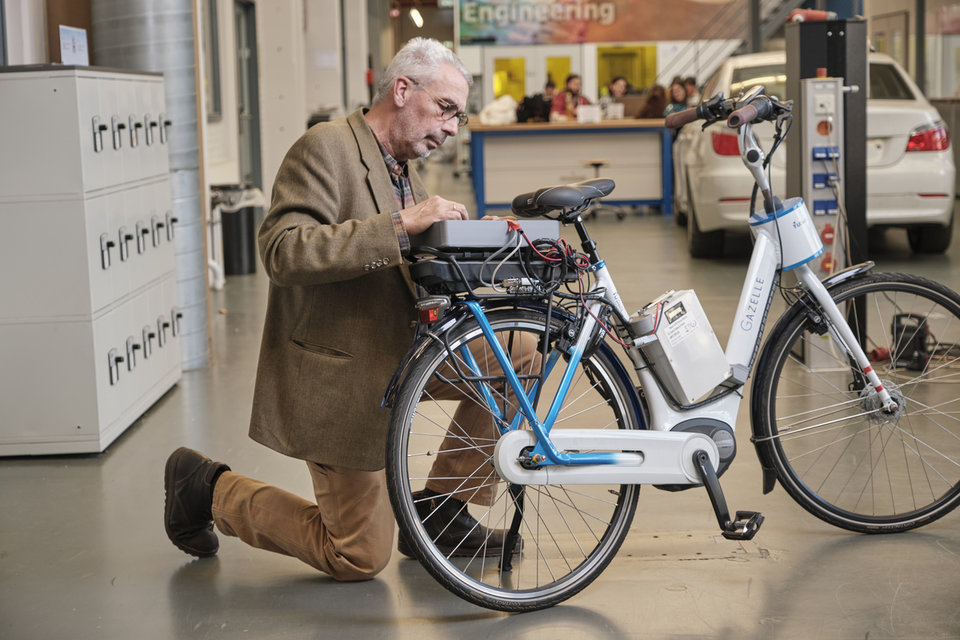Sound represents an event; we use sound to understand the world around us”, says Dr Elif Özcan-Vieira, Associate Professor of Sound-driven Design and Research and Director of the TU Delft Critical Alarms Lab (CAL). “Hearing my bicycle shift gear perfectly encourages me to speed up, but when I hear a car approaching, I may have to take caution for myself or my children. Our interaction with everyday sounds is very functional.”
Özcan has always had a fascination for sound. “I was a teenager in the boom years of FM radio stations, and I was intrigued by the effect of sound on people, such as the emotions that listening to music evoke.” She also always knew she wanted to be a designer. “I liked the idea of imagining things, putting them on paper and then discussing them”, she remembers. Studying at the Middle East Technical University in Ankara, Turkey, she could combine her two passions. “As soon as I started there, I joined the university radio station. I spent all of my evenings and weekends there, becoming a self-taught sound engineer along the way. At the same time, I practiced my design skills by creating sounds or radio shows and plays.”
Perfect match
While working as an interaction designer in Portugal, she heard about a PhD position at TU Delft. “They were looking for an industrial designer with experience in sound design who could do research on product sound. It was a perfect match: I came to Delft feeling I already belonged here”, Özcan says. For the next four years, she immersed herself in the fundamentals of product sound. “Not a lot of research had been done about auditory perception regarding product sounds: how we listen, how we hear and how we talk about the sounds everyday products make. Even less about how we can design sounds.” Özcan believes designers should pay attention to the role of sound from the start of the design process. Consumers experience sound as part of the identity of a product, whereas sound was and is often added as an afterthought by designers. “My research showed how designers could think in terms of sound; I developed the necessary language to talk about sounds, and a method to design them.”
Brand identity
Her thesis put sound design in the spotlights as an upcoming discipline, and this led to a number of interesting research collaborations. “Toyota Motors Europe wanted us to develop dashboard sounds. However, to design a sound that fits with a brand identity, you have to know what that brand entails, and what it means to potential users. You can’t just come up with any pleasant sound”, Özcan explains. “We proposed to create a welcome sound for when you turn on the car. That very first sound would be the base for the remaining warning and information sounds; the sounds altogether had to form one family. While we were delving into the unique identity of their Toyota and Lexus brands, they temporarily halted the project. They had decided to launch their own research into their brand identity, so we certainly got them thinking.”
Working with the European Space Agency (ESA) would change the context drastically. “Designing dashboard sounds for Toyota and Lexus had involved eight sounds, covering eight events: that the indicator is on, or you don’t have your seatbelt on, etc. At ESA, we observed that in mission control rooms there were no less than 1,400 different events. That required a completely different methodology”, Özcan says. While trying to prioritise these events, she encountered an interesting phenomenon: “During four hours of observation we logged 114 events in one mission, but only two were actionable. False alarms put an operator in a constant mode of action. From an ergonomic viewpoint, it also induces mental fatigue.” The solution lay in creating a system that detailed various levels of priority. “We challenged the use of the word alarm, as it was being overused. Non-priority sounds became informing or confirming sounds. For priority events we introduced the terms warning, alarming and urging sounds that respectively denoted ‘be careful’, ‘be ready’, and ‘take action now’.”
Alarm fatigue
You find the same kind of alarm overload in hospitals with incessantly beeping monitors and other equipment. “Up to 98 percent of alarms one hears at an ICU may be false. Clinical staff will stop responding to those sounds due to so-called alarm fatigue, and lack of response poses a risk for patient safety. However, the underlying mechanisms of how nurses become fatigued by alarms had never been investigated”, says Özcan. “We found that nurses in particular also use these alarms as auditory information to monitor patients from a distance. They want to know whether a patient’s respiratory rate is increasing or decreasing, or when an infusion pump will run out, and so on. That is why such alarms are set very tight – alarms are used as sources of information.”
That still leaves patients in the midst of constant noise. “Nurses are at work, and even if they are tired by the end of the day, they can still cope and filter a lot of auditory information, and they have a chance to recuperate their senses”, says Özcan. “ICU patients, on the other hand, are very vulnerable. They have no contact with the outside world, they cannot move their arms or eyes. Their only contact with the world is more often than not through sound, so these sounds become important to them. Like healthy people, they want to understand what is happening through these sounds, but in such a hostile acoustic environment they cannot make sense of them or they cannot interpret these sounds because they never learned them.” Though design has much to offer here, little had been done in the field of medical alarm design. Özcan realised that this went beyond the design of sounds alone. “It is much more about understanding the user context and the various stakeholders, so we can offer different solutions.”
Auditory icons
As part of the Alarm Coalition, initiated by the US Association for the Advancement of Medical Instrumentation (AAMI) Özcan joined forces with US and UK researchers to improve alarms in medical devices. “We studied the idea of auditory icons, sounds that could represent e.g. a heartbeat or an infusion pump, to replace the usual beeps with sounds like running water or rattling pill bottles”, Özcan says. “We developed these sounds based on a collaborative design project with clinicians as well as scientists. Alarms committees across the world are now discussing if the use of such alternative monitoring sounds could be allowed under new regulations.”
Care Tunes
Inspired by the possibility of challenging the notion of alarms, Özcan realised she could also put patient vitals to music. “My aim was to trigger a conversation about the legitimacy of alarms, but the nurses loved the idea”, Özcan says. So her research group designed Care Tunes, a device that transcribes a patient’s condition into music to alert nursing staff to any changes in the patient’s vitals. “Care Tunes is directed at nurses, but from a patient’s perspective, the obvious solution is to simply switch the sound off.” For example, UltiMo, a silent patient monitor, becomes active with sounds and graphics when medical staff enters the room. In the case of visitors, UltiMo will quietly display information on the heart rate. “My main goal with such projects is to inspire change. We don’t always have the practical answers; sometimes we just want to show that other ways of thinking are also possible.”
Holistic approach
Özcan takes a holistic approach to sound. “I look into soundscapes: complete sonic environments. An ICU for example, is a very high-tech environment, full of sound events such as alarms, speech, machinery, footsteps. I want to be able to use technology in order to understand how I can represent the auditory quality of such an environment.” This is the subject of one of her most recent projects: Doplor, a dynamic painting that monitors sound events in the ICU and represents the auditory quality by changing the waves and clouds of the seascape. “The idea with Doplor is to make staff more aware of the sonic environment, and motivate them to change their behaviour accordingly.”
The next step on the horizon is auditory forecasts. “If we can monitor our sonic environment with the help of machine learning, we can also make auditory forecasts”, Özcan explains. “Maybe heavy alarms are expected in one of the patient rooms, so we should move sensitive patients to another room. That will be my next challenge.”




